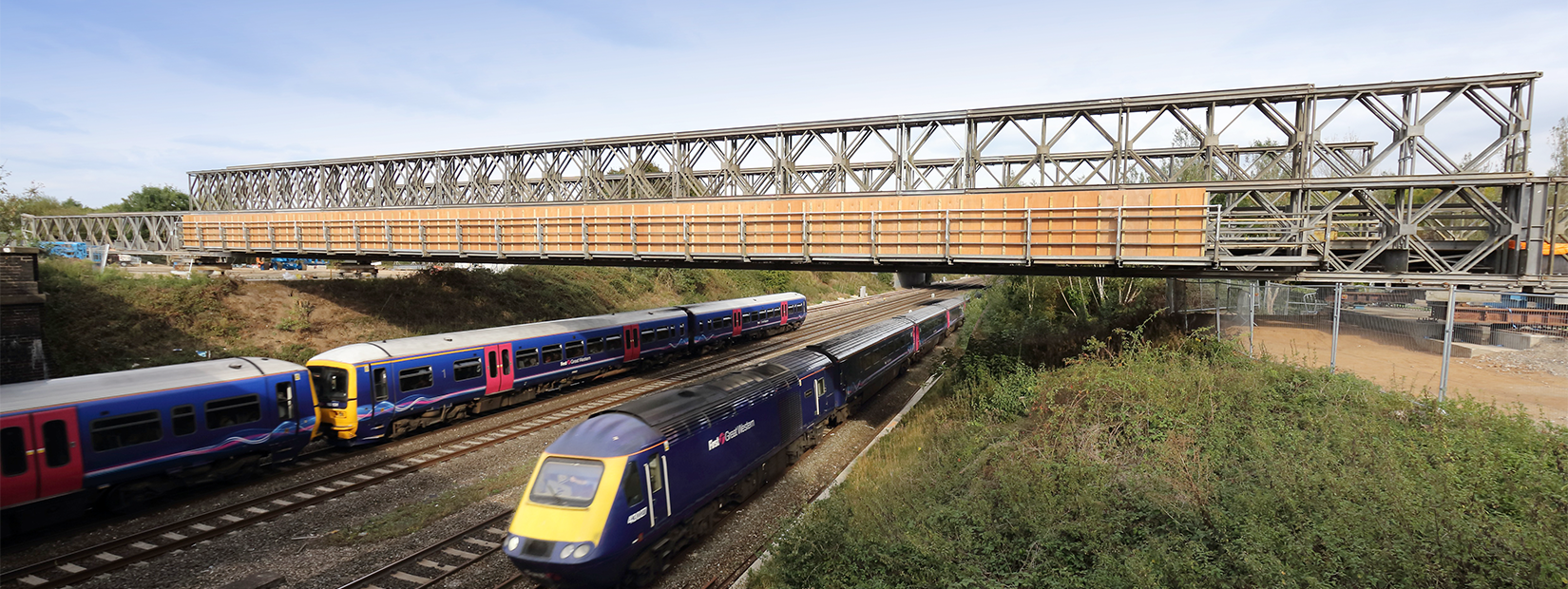The UK has over 30,000 rail bridges, tunnels and viaducts in its network. Maintaining and repairing these bridges, as well as responding quickly and efficiently to any emergencies, is vital to help keep them safe and open for rail traffic. Here, we explore the value of employing intelligent monitoring solutions in conjunction with propping and jacking equipment when working to keep our rail bridges safe.
From spanning roads to rivers and valleys, bridges are an integral part of this country’s rail network. Their closure, whether due to structural repairs or an accidental bridge strike, can have a real impact on rail services, causing huge disruption to passengers. As such, any solution that can help to ensure the bridge is safe to remain open whilst repairs are carried out, or that can keep closures to a minimum following an emergency, is invaluable.
Temporary propping and jacking are one example of such a solution, used to provide structural support for everything from building façades to bridges, to even lifting a bridge off its support piers while work is carried out underneath. Structural monitoring is another, used to provide live, up-to-the minute data on the behaviour of structures and infrastructure, such as buildings, bridges, tunnels and earthworks, either before, during or after work has been carried out.
When propping, jacking and monitoring are used together, the value and benefits for asset managers and contractors can be huge.
Within the rail and highways sector, there is an increasing use of permanent monitoring on structures and other assets, minimising the reliance on visual inspection and human access to detect deterioration or damage. This intelligent, live data provides asset managers with an instant and accurate picture of the condition that the bridge is in, determining its maintenance and repair schedule.
Should the monitoring highlight that the bridge is in need of repairs, this same data can then also be used to feed into designing the appropriate temporary propping and jacking scheme. Likewise, in an emergency, applying structural monitoring to the bridge is perhaps one of the first steps to be undertaken, providing project teams with instant insight into the bridge’s condition and enabling them to take the necessary steps to making the bridge safe, fast.
With enhanced visibility of the behaviour of the bridge, engineering teams know exactly what they are designing for, resulting in a more efficient scheme design. What’s more, having access to such accurate information on the bridge’s loads, condition and structural stability also enables better value-engineering of the propping scheme, potentially helping to reduce the amount of steel required and cut costs.
In addition to informing the design of the propping and jacking scheme, monitoring can also be used in conjunction with the propping equipment to help ensure the structural integrity of the bridge. Given the significant disruption to rail users should a bridge have to be closed, monitoring solutions can be key in enabling a bridge to remain open while essential repairs are being carried out.
One of the many challenges when designing a propping and jacking scheme for a bridge, in comparison to a building, is that the load requirements can change, depending on the amount and weight of passenger and freight services using the bridge on any particular day. By applying structural monitoring technology, teams can be instantly alerted should the loads or forces fall outside of the set limits, enabling them to make the necessary alterations to the props. Here, structural monitoring can be an invaluable means of providing additional confidence and assurance in the propping scheme, as well as mitigating risk.
Pushing this integration between monitoring and propping further, there is even the potential for the hydraulic props on site and the monitoring software to be automatically and intelligently linked. Here, should a change in loading or deflection be detected, an alert can be triggered, causing the jack to automatically adjust and move to satisfy the new load requirement. It is perhaps this very integration and flow of data between the two disciplines that is one of the key benefits of working with a temporary works provider that possesses both propping and monitoring capabilities, enabling a speedier and more streamlined workflow, as well as minimising the complexities of managing multi-supplier projects.
